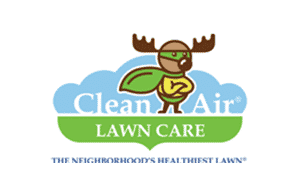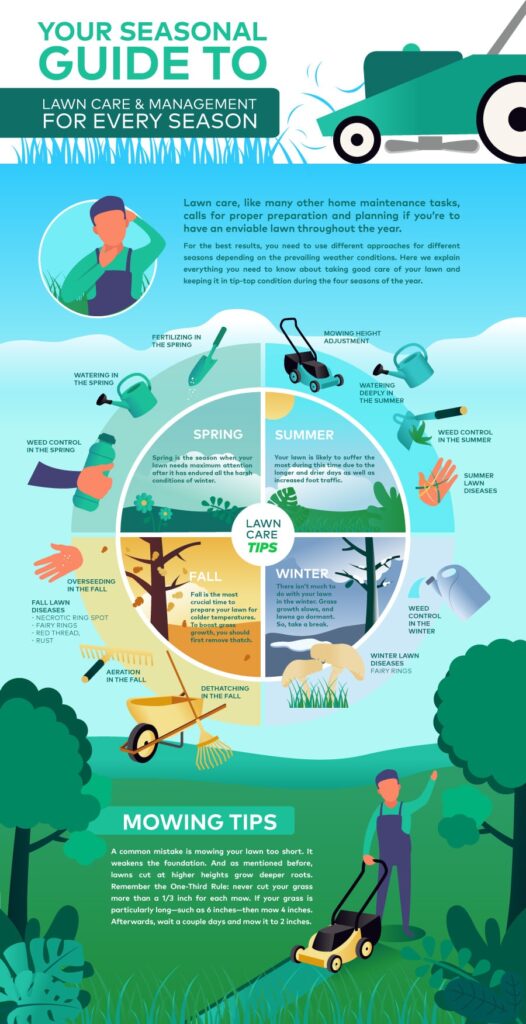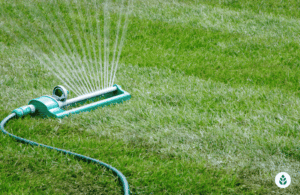Lawn Irrigation Guide: Best Methods for Watering Your Yard [2022]
In this lawn irrigation guide, we’ll discuss:
- What it means to irrigate effectively
- Where and when to irrigate
- What methods of lawn irrigation exist
- How to save water and avoid overwatering
Why You Can Trust EcoWatch
We work with a panel of experts to create unbiased reviews that empower you to make the right choice for your home. No lawn care site has covered the root issues as long as EcoWatch, which means we’re dedicated to pointing you in a sustainable direction. Our rankings are never affected by revenue or partnerships.
Simply put, lawn irrigation is watering your grass. But the process of irrigation is anything but simple. Knowing when, where and how much to water your lawn can feel overwhelming, and for eco-conscious homeowners, the process is even more daunting. Traditional methods of irrigation can be wasteful and costly if done incorrectly, so it is important to be aware of your lawn’s needs and act accordingly.
This guide will explain the basics of irrigation so you can maintain your lawn with minimal time and resources. If you’re looking for professional help with your lawn, click below to be connected with one of our approved, sustainable lawn care service providers.


50 States
Average cost
Sunday
-
All-natural products
-
Commitment to sustainability
-
Great reputation
-
DIY lawn care might not work for every homeowner
-
Relatively young company
Services Offered
-
DIY Lawn Services
-
Customized Lawn Care
-
Weed Control
-
Grass Seed
-
Pest Solutions
-
Fertilization
-
Spot Treatments


50 States
Average cost
Lawnbright
-
All-natural products
-
Commitment to sustainability
-
Makes charitable contributions
-
DIY lawn care might not work for every homeowner
-
Relatively young company
-
Slightly expensive
Services Offered
-
DIY Lawn Services
-
Customized Lawn Care
-
Weed Control
-
Pest Solutions
-
Fertilization
-
Spot Treatments


18 States
Average cost
Clean Air Lawn Care
-
Great reputation
-
Uses solar-powered and electric mowers
-
Makes charitable contributions
-
All-natural products
-
Service area still growing
Services Offered
-
Fertilization
-
Pest Solutions
-
Weed Control
-
Mowing & Trimming
Jump To: What is Lawn Irrigation? | When, Where and How Much to Water | Types of Irrigation Systems | Water Conservation and Boosting Efficiency | Eco-Friendly Alternatives
What is Lawn Irrigation?
Lawn irrigation, or the process of watering your grass, accounts for almost half of the water used by American homeowners.1 Although irrigation is a necessary part of maintaining a traditional lawn, when done incorrectly, it can be expensive and time-consuming.
But don’t worry! With a little know-how, lawn irrigation can be quick and efficient instead of costly and wasteful. Continue reading to learn how to water your lawn to meet its unique needs.
When, Where and How Much to Water Your Grass
Understanding the watering needs of your lawn may seem confusing, but the process is actually straightforward.
When to Water Your Lawn

The best time of day to water your yard is the early morning. This helps prevent fungal diseases and decreases evaporation compared to watering during the day.
How Frequently to Water Your Lawn
The National Resources Conservation Service recommends only irrigating your lawn once every four to eight days. In fact, watering every day is not only wasteful, but it can also lead to shallow roots, causing the turf to be weaker and less healthy.
The amount of water needed for your lawn to flourish depends on which of the three soil types you have. Between clay, loam and sand, clay needs to be watered the least often and seeps in more slowly, while sand retains less water and should be watered more frequently.3
Where to Water Your Lawn
In general, you should be watering less frequently in shady areas of your lawn. Water will evaporate more slowly in the shade, so focus on the sunny spots to maintain healthy root systems. You also want to focus on providing moisture directly to the roots of the grass rather than spraying water onto the leaves.
How Much to Water Your Lawn
You should be aiming to wet the soil so that it penetrates 6 inches down. This will encourage a healthy, deep root system that has a robust defense against droughts.
If you have a sprinkler system, you can test how deep the water is reaching by comparing how many inches of water your irrigation system is putting out versus how deep the water reaches in the soil. You can determine how much water your sprinkler system puts out each hour by setting a shallow dish or cup out while the system is running and checking how deep the water is after the hour. Check the depth of the water in the soil with a garden spade each hour until your desired depth is reached. This way, you can decide how long to run your system for. For example, if your sprinkler puts out ½ inch of water in an hour, and the soil moisture is 3 inches deep when checked with a garden spade, your system should be running for two hours to achieve your desired depth of 6 inches.
How much and how frequently you need to water your lawn can also help determine what type of irrigation system is best for your needs.
Types of Lawn Irrigation Systems
When choosing a water system for your lawn, factors like cost, installation, maintenance and efficiency are all important to consider. The size and location of your lawn will also help determine which lawn irrigation system is best for you. Reference the table below to learn more about each type of irrigation system:
| Type of Landscape/ Lawn Irrigation | Description | Pros | Cons |
| Manual Irrigation | Traditional watering by hand, typically with a garden hose or watering can. | + Cheap
+ Accessible + No setup or installation costs |
– Time consuming
– Labor intensive – Cannot be done in large areas |
| Sprinkler Irrigation System | The use of sprinklers, commonly oscillating sprinklers, to spray water onto the lawn from above ground. | + Relatively cheap and accessible
+ Can cover large areas + Uniform water distribution |
– Can waste water due to evaporation
– A ground sprinkler system can be more costly than a simple lawn sprinkler |
| Drip Irrigation System | A water delivery system typically using PVC pipes and emitters underground or near the surface to slowly allow water to drip onto the roots of the plants. Also used for garden irrigation. | + Reduces evaporation and requires less water
+ Efficient and waters roots directly + Can easily control amount of water put on plants |
– Can be timely and expensive to set up
– Lawnmowers or other equipment can slice pipes |
If you don’t want to hire a professional to install an irrigation system, it is possible to DIY. Installing an underground sprinkler system can expedite your irrigation routine.
Water Conservation and Boosting Efficiency
At EcoWatch, our first priority is the environment. We recognize that traditional lawns are not the most environmentally friendly choice, in part due to pesticides, excess water usage and gas used to power mowers and other lawn equipment. However, we know that it is not a realistic option for every homeowner to ditch their lawn in favor of an eco-friendly oasis. So, we want to give homeowners an idea of how to reduce their impact and choose eco-friendly options whenever possible.
Water conservation, or reducing excessive water use, is one way that you can help protect the environment and natural resources. Plus, your efforts to reduce water usage not only lower your water bill, but also help with water conservation and can make your lawn greener.
To begin, determine if you have been watering too much or too little. Then you can decide what solution to implement based on your lawn’s needs and what resources are available to you. If you need the help of a professional or want a soil test done, here are a few lawn care companies EcoWatch recommends for products and services:
How to Know if You’re Overwatering or Underwatering
If you are experiencing water runoff or pooling, you are likely overwatering your lawn. As a general rule, you only need to water your backyard once or twice a week during the summer months. Watering your lawn too frequently can result in shallow, unhealthy root systems.
Underwatering a lawn will cause dry soil and slow grass growth. A good test to determine if you’ve been underwatering is to step on your grass. If it does not spring back quickly after being stepped on, you should be watering more.
Installing a Smart Lawn Watering System
One way to ensure that you are watering your lawn optimally is to install an automatic irrigation system. A simple implementation of this would be a timer to shut off the water according to your set preferences. Smart irrigation controllers take it one step further, connecting to Wi-Fi or cellular data to forecast climate and weather conditions and measure soil moisture and absorption rates to optimize the system’s watering schedule.4
Additional Conservation Tips
Not everyone has the resources to install an automatic irrigation system, but you can still make a difference. Every effort to save water counts, including:
- Reducing water flow with efficient spray nozzles, spray heads and sprinkler heads
- Setting a timer when your sprinklers are running so you don’t forget to shut them off
- Checking the weather and relying on rainwater when you can
- Learning how much and when to water your lawn so you can create an informed watering schedule and stick to it
The best water conservation effort you can make may be to ditch your lawn altogether. Read on to learn about eco-friendly lawn alternatives.
Eco-Friendly Alternatives to a Lawn
The cheapest and most low-maintenance lawn may not be a lawn at all. Traditional lawns in the U.S. consist of non-native turfs like ryegrass and Kentucky bluegrass that require much more water and care than native plants and flowers. In addition, incorporating native flowers and plants supports food chains by sustaining bugs and bees and attracting wildlife.
Groundcover plants like clover, creepy jenny, barberry cotoneaster, and herbs like thyme and oregano provide a traditional green turf appearance while requiring little to no watering, mowing or maintenance.
Even incorporating some of these low-maintenance plants into your traditional lawn care routine can reduce your water use and time spent on yard upkeep.
FAQ: Lawn Irrigation
Irrigation is the process of improving plant growth through artificial application of water to lawns, gardens, landscapes or crops.
Lawns should be watered once or twice a week during the warm months. Water should penetrate about 6 inches deep into the root system. Irrigation systems include drip irrigation, underground sprinkler systems, or other sprinklers such as oscillating or impact sprinklers.
A lawn irrigation system can be worth the initial investment if you want to improve the health and appearance of your lawn. Irrigation systems range from a simple oscillating sprinkler connected to a hose to much more complex underground irrigation systems.

 233k
233k  41k
41k  Subscribe
Subscribe 


 All-natural products
All-natural products  DIY lawn care might not work for every homeowner
DIY lawn care might not work for every homeowner  DIY Lawn Services
DIY Lawn Services 

